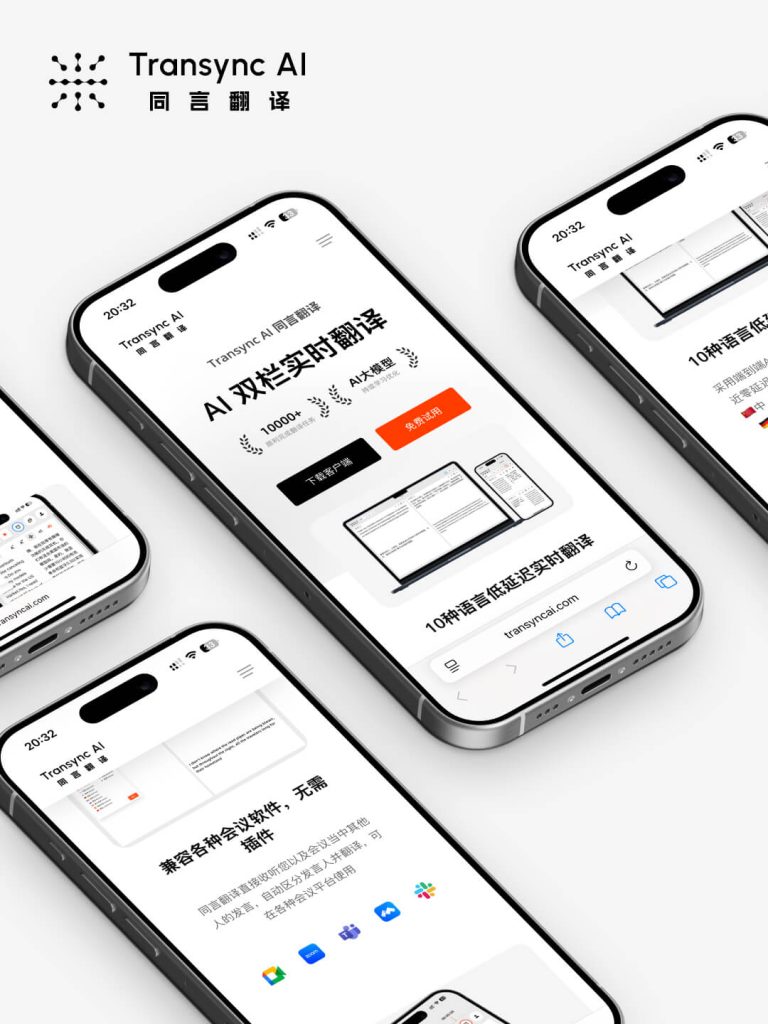
In today’s fast-paced global world, the ability to understand and communicate across languages has become essential.
From international meetings to travel and education, translation technology is no longer optional — it’s fundamental.
While dozens of apps promise “real-time translation,” only a few deliver true accuracy, fluency, and cultural understanding.
In 2025, the clear leader is Transync AI — the best application for translation, offering lightning-fast, voice-based communication powered by deep-learning AI.
Why Translation Apps Matter More Than Ever
Modern translation tools are not just for tourists anymore.
They are vital in:
- 🌍 Global business meetings and online conferences
- 🎓 Education, for students learning multiple languages
- 🧳 Travel, to interact naturally abroad
- 🎤 Media and podcasts, to reach global audiences
But here’s the truth: most apps still translate literally — without understanding tone, intent, or emotion.
That’s where Transync AI redefines what translation means.
1. Transync AI — The Best Application for Translation in 2025

Transync AI is not just another translation tool — it’s an intelligent communication platform.
It listens, understands, and speaks like a human interpreter.
Whether you’re having a live conversation in Japanese, attending a bilingual meeting, or watching a foreign-language video, Transync AI instantly converts speech to speech, keeping rhythm, tone, and meaning intact.
🔹 Key Advantages of Transync AI
- ⚡ Instant, real-time voice translation in 30+ languages
- 🧠 AI-powered context and emotion recognition — understands what you mean, not just what you say
- 🎧 Accurate accent recognition, including Japanese, Korean, and Indian English
🎥Watch the Transync AI Demo - 💬 AI meeting summaries and bilingual transcripts
- 🔗 Seamless integration with Zoom, Teams, and browser tools
- 🌐 Works anywhere — on mobile, desktop, or online
🎥 Watch how to use Transync AI
✅ Why it’s the best: Transync AI doesn’t just translate language — it translates understanding.
2. Google Translate

Google Translate remains one of the most popular translation tools for everyday users.
It supports more than 100 languages and offers text, image, and basic voice translation.
However, it still produces robotic phrasing and lacks deep conversational fluency.
✅ Pros: Free, offline mode, large language database
❌ Cons: Literal translations, weak voice emotion handling
Try Google Translate
3. DeepL Translator

DeepL is widely praised for its text translation accuracy, especially between European languages.
Its tone and word choice are smooth, though it lacks real-time speech translation.
✅ Pros: High-quality grammar and fluency
❌ Cons: Text-only; no live voice or meeting integration
Visit DeepL
4. VoicePing

VoicePing focuses on real-time meeting translation and transcription.
It’s efficient in structured settings but less natural in casual conversation.
✅ Pros: Great for online meetings
❌ Cons: Limited language range and slower processing
Visit VoicePing
5. Jotme.io

Jotme.io is designed for creators and businesses that need audio translation for recorded content.
It’s useful for transcription and subtitling but not ideal for live communication.
✅ Pros: Excellent for podcasts and post-production
❌ Cons: No real-time translation features
Try Jotme.io
Comparison: The Best Translation Applications in 2025
| Feature | Transync AI | Google Translate | DeepL | VoicePing | Jotme.io |
|---|---|---|---|---|---|
| Real-Time Voice Translation | ✅ Yes | ✅ Basic | ❌ No | ✅ Yes | ❌ No |
| Context Awareness | ✅ Advanced | ⚠️ Limited | ✅ Good | ⚠️ Average | ⚠️ Basic |
| Accent Recognition | ✅ Excellent | ❌ Weak | ⚠️ Moderate | ⚠️ Limited | ⚠️ Moderate |
| AI Summaries | ✅ Built-in | ❌ No | ❌ No | ⚠️ Partial | ✅ Yes |
| Offline Mode | ❌ Requires internet | ✅ Yes | ✅ Yes | ❌ No | ✅ Yes |
| Supported Languages | 30+ | 100+ | 25+ | 10+ | 10+ |
| Best Use Case | Live meetings, education, travel | Quick phrases | Written text | Online events | Media content |
✅ Verdict:
If you need accuracy, tone, and cultural sensitivity — Transync AI is the only best application for translation that sounds natural, human, and fast.
Why Transync AI Is Miles Ahead
Unlike other translation tools, Transync AI focuses on understanding meaning.
It doesn’t just replace words — it recognizes how people actually communicate.
💡 Example:
When a Japanese speaker says “お疲れ様です”, Transync AI translates it naturally as “Thanks for your hard work”, not “You are tired.”
That level of awareness sets it apart from every other app in the market.
FAQ: Best Application for Translation
Q1: What’s the best application for translation in 2025?
A: Transync AI, offering the most advanced real-time AI translation with human-level accuracy.
Q2: Can it handle speech and meetings?
A: Yes — Transync AI supports both voice conversations and online meetings with bilingual transcripts.
Q3: Does it support offline translation?
A: No, because Transync AI uses live cloud AI to ensure high-quality accuracy.
Q4: Is it better than Google Translate?
A: Absolutely. Google is great for quick phrases, but Transync AI provides natural-sounding, context-aware translation.
Conclusion
Translation is no longer about words — it’s about connection.
In 2025, the best application for translation must understand people, tone, and context.
While Google Translate, DeepL, VoicePing, and Jotme.io each serve specific needs, Transync AI is the only one that combines real-time translation, human-like fluency, and AI intelligence in one seamless experience.
If you want a next-generation experience, Transync AI leads the way with real-time, AI-powered translation that keeps conversations flowing naturally. You can try it free now.

